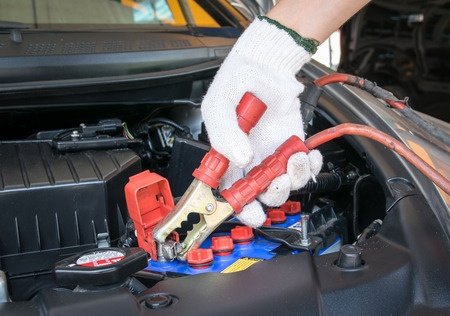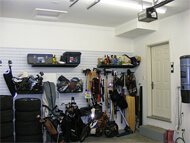The Farmer’s Almanac predicts a cold and snowy winter here in Toronto. Yet, meteorologists are expecting a mild winter in Southern Canada courtesy of the worst El Niño we’ve seen in half a century. Either way, the first snow of the season has already hit. Perhaps this first blast of wintry weather caught you off guard. If so, now’s the time to prepare your vehicle and your garage for the winter ahead.
Make Room in the Garage
During warmer months it’s common to park in the  driveway to make room for bicycles and other sports equipment that tends to take over the garage. However, to maximize the life of your car and minimize your morning prep time, park your vehicle inside the garage whenever possible. Faced with a sea of bicycles, skateboards and soccer balls, it may seem impossible to safely squeeze your vehicle into the garage. However, it can be a lot easier than you think.
driveway to make room for bicycles and other sports equipment that tends to take over the garage. However, to maximize the life of your car and minimize your morning prep time, park your vehicle inside the garage whenever possible. Faced with a sea of bicycles, skateboards and soccer balls, it may seem impossible to safely squeeze your vehicle into the garage. However, it can be a lot easier than you think.
- First, sort through your things and edit anything you don’t need. Be brutal. That means ditching old tires, broken furniture and toys the kids have outgrown. If the item is still usable, donate it to a deserving charity or gift it to a friend. Rotate seasonal items.
- Group similar items. Find anything you need in a flash by storing related items into specific zones. Create an area near the garage door to store winter weather items, like salt and snow shovels. Set up a zone for automotive fluids and supplies. Store fluids on shelves or in a garage cabinet, away from kids and pets. Place winter sports gear in a dedicated zone children can easily access. Eliminate any unnecessary duplicates discovered while sorting.
- Arrange items along the garage perimeter. A wall organization system with movable shelves, baskets and hooks will maximize the items you can store along your garage perimeter.
Once you’ve created space, park your vehicles inside the garage to protect them from the harsh winter weather. Now it’s time to prepare your vehicle for the heavy snow and bitter cold that lies ahead.
Prepare Your Vehicle for Winter Weather Hazards
The contradictory predictions about what to expect this winter require cautious drivers to prepare for whatever lies ahead. Take a few simple steps now to prepare your vehicle for frigid temperatures and snowy conditions.
- Stock up on automotive supplies like antifreeze, windshield washer fluid and wiper blades.
- Store additional supplies in your trunk, including all three items listed above. Keep kitty litter or gravel on hand to create traction if you get stuck and a shovel to dig yourself out.
- Get all-weather tires. Unlike all-season tires, all-weather tires carry the severe service emblem. An aggressive tread enables all-weather tires to bite snow and divert water and slush, so they handle better during perilous winter conditions. Another option is to get snow tires. Store the alternate set of tires on a tire rack to retain limited garage floor space.
- Keep vehicles running in top shape. Don’t skimp on oil changes and other maintenance. Thinner oil performs best during colder temperatures, but check your owner’s manual to see what the manufacturer suggests. Top off fluids, including windshield washer fluid and antifreeze.
- Keep the gas tank full. Don’t wait until your needle hits E. Fill your tank at the halfway mark so you’ll be ready if forced to sit in traffic for hours during a storm.
- Use an engine block heater when parking outside in brutally cold temperatures. By keeping the engine warm, the block heater prevents damage to engine components that can occur when heating the engine in extremely cold weather. Your car will also heat up faster.
Whether we have a cold and snowy winter or a particularly mild one, there are sure to be plenty of days when winter weather will impact your commute. Prep your garage by reducing clutter, organizing the space and arranging items along the perimeter so you can park your vehicles inside. Ready your car for winter by stocking up on winter weather supplies. Store essentials in the trunk of your car. Invest in Ontario winter-worthy tires. Properly maintain vehicles, top off fluids and use a block heater to avoid starting an ice cold engine. Then you’ll be prepared for the winter ahead, regardless of what the weather may bring.



